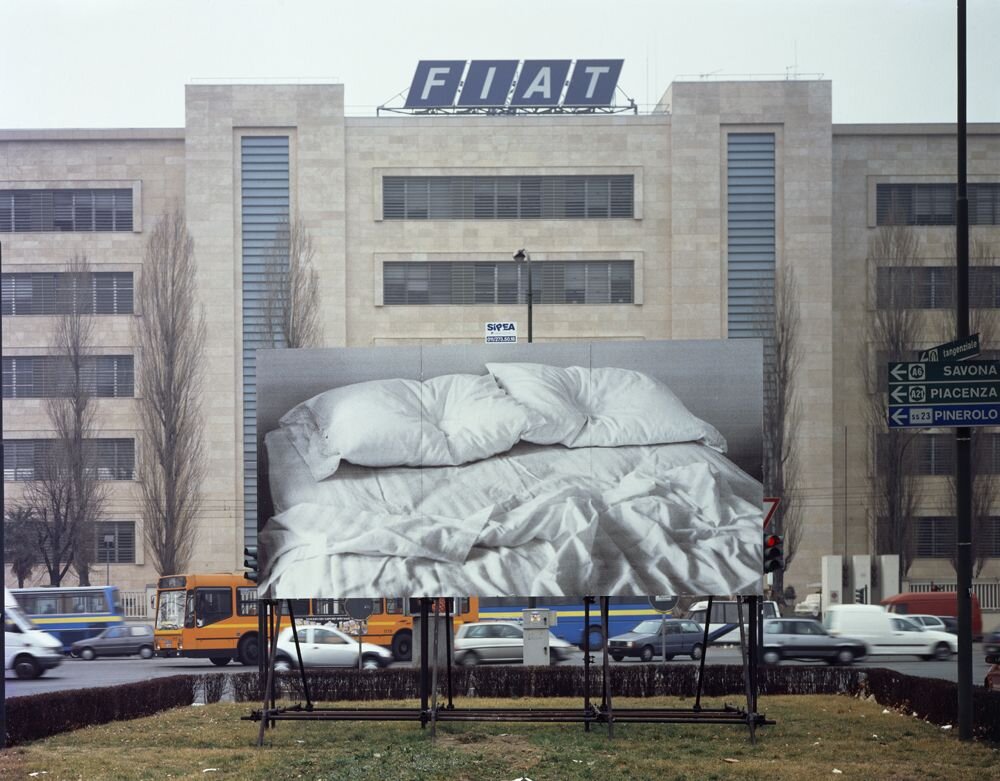mood VIII
Rafael Soldi joins us in the eighth installment in our new series called, a mood. He is sharing with us some personal writing, along with a collection of images and music. This series has allowed us the pleasure of connecting with friends, friends of friends, and creatives we admire. It has grown and continued organically, allowing us opportunities to find inspiration through these connections and conversations.
Rafael Soldi is a Peruvian-born, Seattle-based visual artist and independent curator. He has exhibited internationally and his work is in numerous institutional collections throughout the United States. His first artist monograph was published by Candor Arts in 2020. He is a co-founder of the Strange Fire Collective and co-curator of The High Wall.
To see more of Rafael’s work please visit his website or follow him on Instagram. Please listen to Rafael's playlist as you read and view.
First row: (1) Felix Gonzalez-Torres, "Untitled", 1991. 1 of 6 outdoor billboard locations throughout Turin, as part of the exhibition “Quotidiana: The Continuity of the Everyday in 20th Century Art.” Castello di Rivoli, Museo d’Arte Contemporanea, Turin, Italy. © The Felix Gonzales-Torres Foundation // (2) Shikieth, “This was his body/ His body finally his,” plaster, Indian ink, 2017 // (3) Painting by Anthony Cudahy.
Second row: (4) Ana Mendieta, “Untitled” (from the Silueta series), 1973-1977 // (5) Ana Mazzei, “Garabandal: Morte, Ascensão e Êxtase,” photo by Everton Ballardin // (6) Alex Hibbert (left) and Mahershala Ali in “Moonlight” (2016), directed by Barry Jenkins.
Third row: (7) Tarrah Krajnak, from “Master Rituals II: Weston's Nudes” // (8) Fight scene on the tree tops in Ang Lee’s “Crouching Tiger, Hidden Dragon,” 2000 // (9) Sculpture by Birthe Piontek, 2019.
As I find myself bound to the confines of limited space, I can’t help but gravitate to images that transport me into other worlds, each in a different way. When compiling images for this mood board I struggled to condense the many feelings of this moment into a tight space, much the way we are doing with ourselves right now. The works I selected range in topic, medium and reason, much in the way my own emotional relation to the current state of affairs see-saws. The playlist I've shared is what I'm listening to the last few weeks, a mix of somber, reflective songs, and fun upbeat tracks.
Works like Ana Mendieta’s burning silhouette, Tarrah Krajnak’s reclaiming of Weston’s nudes, and Birthe Piontek’s sculpture with its bulging, fleshy pouches all speak differently to the female body, and remind me of how society and the law continue to control, legislate, and denigrate women’s bodies.
Similarly, Ana Mazzei’s sculpture here is designed to support a body in a specific formation, like a gracious fall suspended in mid-air. This vision of the body graciously falling in mid-air snapped into my mind a memory I had not thought of in over a decade—going to the movies with my dad 20 years ago (I was 12) and seeing Ang Lee’s, Crouching Tiger. I don’t remember the movie but I remember seeing, no, feeling, this stunning scene where the two characters are fighting amongst the treetops, flying and weightlessly gliding across the branches with an elegance that can only be attributed to the Japanese kinetic.
Barry Jenkin’s movie, Moonlight, beyond presenting an intimate portrait of Blackness and queerness, is a feast for the eyes—a glorious reel of gorgeously crafted frames.
Shikieth’s work presents an intimate lens on Blackness, through sculpture, installation, photography, and film.
Anthony Cudahy’s subjects are often men painted in beautiful palettes with a gestural stroke—I often feel that the subject is less the men themselves and more their gesture. A recurring subject is these face closeups that I find haunting and beautiful—I’m taken with how he can communicate so much of an expression with so few brushstrokes.
Lastly, I have been deeply engaged in reading and researching artists and writers who documented the AIDS pandemic of the 80’s and 90’s. I find it important to look to them as models for how to survive, document, and contextualize our current situation. One of my all-time favorite artists and one of the greatest artists of our time is the Cuban-American Felix Gonzales-Torres, whose work told the story of the AIDS epidemic in elegant and perfectly articulated ways. In this piece, a billboard shows an image of an empty bed, the depression in the center of each pillow, suggesting a recent presence, conveys a profound sense of intimacy. But this scenario is in jarring contrast to its public location—on a billboard. First exhibited on the streets of Manhattan, this evocation of absent bodies soon came to define all of Felix Gonzales-Torres’ work up until his death in 1996 from AIDS-related causes.










